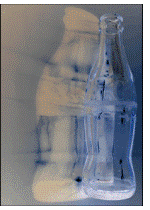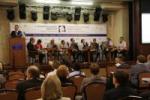- عربي
- Ukraine
- Economy
-
Investment
- Current Investment Trends
- Legal Conditions of Doing Business
- Investment Policy
- Competition
- Setting a Business in Ukraine
- Mergers and Acquisitions
- Taxation
- Import and Export
- Banks and Bank Regulation
- Convertibility and Profits Repatriation
- Currency Regulation
- Protection of Intellectual Property Rights
- Companies
- Travel to Ukraine
- About us
- Useful Sites
- Gallery
- News
Currency rates in UAH
| AED | ||
| BHD | ||
| EGP | ||
| KWD | ||
| LBP | ||
| OMR | ||
| QAR | ||
| SAR | ||
| SYP |
2015-07-06
| Kiev |  |
+32 |
| Donetsk |  |
+28 |
| Dnipropetrovsk |  |
+31 |
| Lviv |  |
+31 |
| Odessa |  |
+27 |
Protection of Intellectual Property Rights
Ukraine has already established a comprehensive legislative system for the protection of the intellectual property rights. Since 1993 Ukraine has enacted legislation relating to patents on inventions, models, industrial designs, plant varieties, seeds, cattle breeding, trademarks, copyrights and laws on the protection of information in automated systems. Special amendments have been made to the Criminal and Administrative Codes of Ukraine to provide criminal and administrative sanctions for disclosure of trade secrets and unfair competition.Ukraine is a member of the Paris and Madrid Unions, and a party to the Patent Co-operation Treaty and Universal Copyright Convention. In addition, on May 31, 1995, the Parliament passed a law whereby it acceded to the Berne Convention for the Protection of Literary and Artistic Works (the Paris Text of July 24, 1991, as amended). The accession by Ukraine to the Berne Convention represents further positive developments in the area of the protection of intellectual property rights. Application of the Berne Convention is limited to literary and artistic works which have not yet become a part of the public domain in Ukraine. According to the “Law of Ukraine on International Treaties” of Ukraine all international agreements to which Ukraine is a party constitute integral parts of its domestic legislation. Accordingly, the provisions of the foregoing conventions form part of Ukraine's legislative regime on intellectual property.
One milestone in the regulation of intellectual property rights was the adoption on Jan. 16, 2004 of the Civil Code of Ukraine. The fourth Section of the Code contains the majority of rules concerning intellectual property. The Code reflected the current state of the economy, national traditions and customs, and it brought Ukraine’s IPR system closer to international standards.
The Section contains a general provision, the general principles of copyright, related rights, intellectual property rights in scientific discovery, invention, utility models, industrial design, innovative proposals, the layout of integrated circuits, plant varieties, and animal breeds, as well as trademarks, that is, marks for goods and services, geographical indications and trade secrets.
Intellectual property rights (IPR) can be divided into four groups. The first group, copyright and related rights, includes literary and artistic works, computer programs, compilations of data (databases), performances, phonograms, videos, and transfer (program) broadcasting organizations. The second group consists of industrial property: inventions, utility models, industrial designs, layouts or topographies of integrated circuits, and innovative proposals. The third group includes plant varieties and animal breeds, which are equal to industrial property in legal terms. The fourth group consists of commercial or company names, trademarks, that is, marks for goods and services, geographical indications, and trade secrets.
At the moment, considerable attention is being paid to the legal protection of intellectual property rights. Violations of IPR include: piracy (publication, reproduction, import into/export from the customs territory of Ukraine, and distribution of counterfeit copies of works, phonograms, video grams, programs of broadcasting organizations), plagiarism (the publication of all or part of someone else's work under the name of the person who is not is the author of the work), forgery, and alteration of information as well.
Despite the fact that Ukraine has already formed the legislative underpinnings for IPR, a large number of unresolved issues remain. The most acute ones include: 1) the release of pirated products, including websites created solely for distributing pirated materials, 2) the uncontrolled use of knock-offs; 3) the duration of patent and trademark registrations, the protection of computer programs and databases, the protection of producers of audiovisual products, and the protection of trademarks for goods and services.
In terms of patent protection, Ukraine belongs to a number of international treaties, including the Paris Convention for the Protection of Industrial Property (1883), the Patent Cooperation Treaty (1970), the Strasbourg Agreement Concerning the International Patent Classification (1971), the Budapest Treaty on the International Recognition of the Deposit of Microorganisms for the Purposes of Patent Procedure (1977), the Agreement on Trade-Related Aspects of Intellectual Property Rights (1994), and the Patent Law Treaty (2000). In turn, the Civil Code of Ukraine, the Protection of Inventions and Utility Models Act of Ukraine, the Protection of Industrial Designs Act of Ukraine and a number of acts by the Ministry of Education and Science of Ukraine regulate patents domestically. In general, Ukrainian legislation on patents complies with international standards in this field.
The lifecycle of every patent may be divided into four stages: (i) the development of the technology, (ii) the filing and pursuit of a patent application, and (iii) patent enforcement, which may include (iv) patent litigation.




